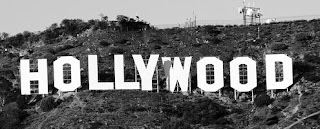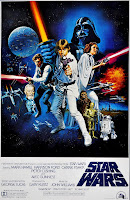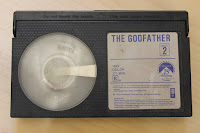When watching movies like The Wolf
of Wall Street, The Big Lebowski, Django Unchained, How to Train Your Dragon,
or eagerly wait for Star Wars: Episode VII – The Force Awakens, we rarely think
of the history of film. Film is embedded into our society and is the norm that
it’s strange to think it wasn’t always like that. Let's look at the early years of film, the silent years, the pre-World War II sound era, the post-World War II
 |
| Muybridge captures movement, first film |
Early Years
- 1888: Thomas A. Edison designs a machine with
his assistant
W. K. L. Dickson that would make and show moving pictures.
Cinematographe camera - Louis and Auguste design a camera called Cinematographe, which can both record and project.
- La Sortie de l'usine Lumière a Lyon is the first film to be shot using the Cinématographe camera.
- In 1896 Georges Melies shifted the consciousness of film as photographs to films as stories, or narratives.
- The rise to popularity of story film can be credited to Nickelodeon. No, not the Nickelodeon network we see today, but the nickel theatre boom in the early 1900s. Nickel theatres is exactly what it sounds like, people paid a nickel to get into a theatre to see about an hour worth of film.
The Silent Years
- By the 1915’s, many companies were looking for location shootings. The suburb in LA named Hollywood had everything, great weather, and everything within a driving distance. The Weather Bureau had estimated that of the entire year, 320 days called for clear weather, perfect for filming. Production teams had the beach, desert, mountains, forests, lakes, valleys, islands, seacoast all within a 50-mile radius, making it the best film location.
- Consequently, many of the corporations we know
and love today were founded during these times

Early Hollywood - Universal Pictures, 1912
- Warner Brothers, 1923
- MGM, 1924
- Columbia Pictures, Inc. 1924
- Paramount Pictures, 1927
- Twentieth Century-Fox, 1935
- On February 8, 1915 the film Birth of a Nation, by D.W. Griffith, was marked a landmark film in the history of cinema. The three-hour long film featured many new techniques that are still used today.
- By the 1920’s with new genres being filmed, slapstick comedy was the most popular. It was during these times that we see the rise of Charlie Chaplin and the like.
Pre-World War II
- October 6, 1927, The Jazz Singer, directed by Crosland, hit theatres. This was the
first film considered a “talkie,” whichmeans it had dialogue. With the success of the film, film productions began to transition to using dialogue in their films.
- 1967-69 was a turning point in film history in
the sense
that the youth began attending movie theatres in record numbers. This is primarily because of movies such as Bonnie and Clyde (1967), 2001: A Space Odyssey (1968), The Wild Bunch (1969), Medium Cool (1969), Easy Rider (1969).
Star Wars trailer
- The 1970’s proved to also be a turning point for film with movies such as The Godfather (1972), Jaws (1975), Star Wars (1977).
Shift to the 21st Century
- Towards the end of the 20th century
and beginning of 21st
century new technology revolutionized how people can see movies. With the rise of videocassette recorders then
The Godfather trailer
- 1990’s saw a new type of film, which incorporated computer-generated imagery, or CGI. CGI became the standard in films and was used in any film having special effects such as Jurassic Park (1993), Independence Day (1996), The Matrix (1999).
During these times with people
experimenting and creating film, it would revolutionize the film industry. It was the inventions and ideas made during
these times that would shape how we film/see film today.